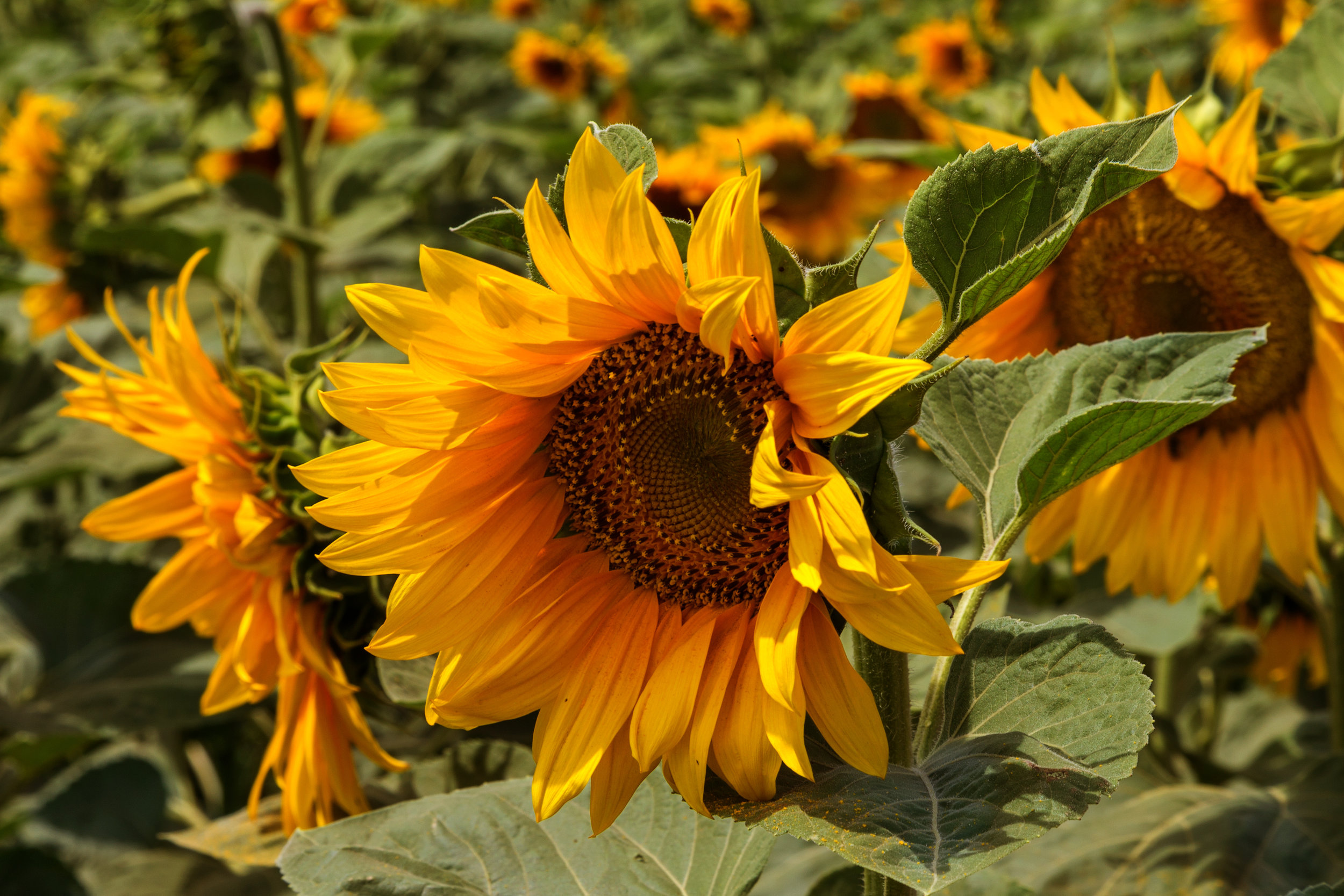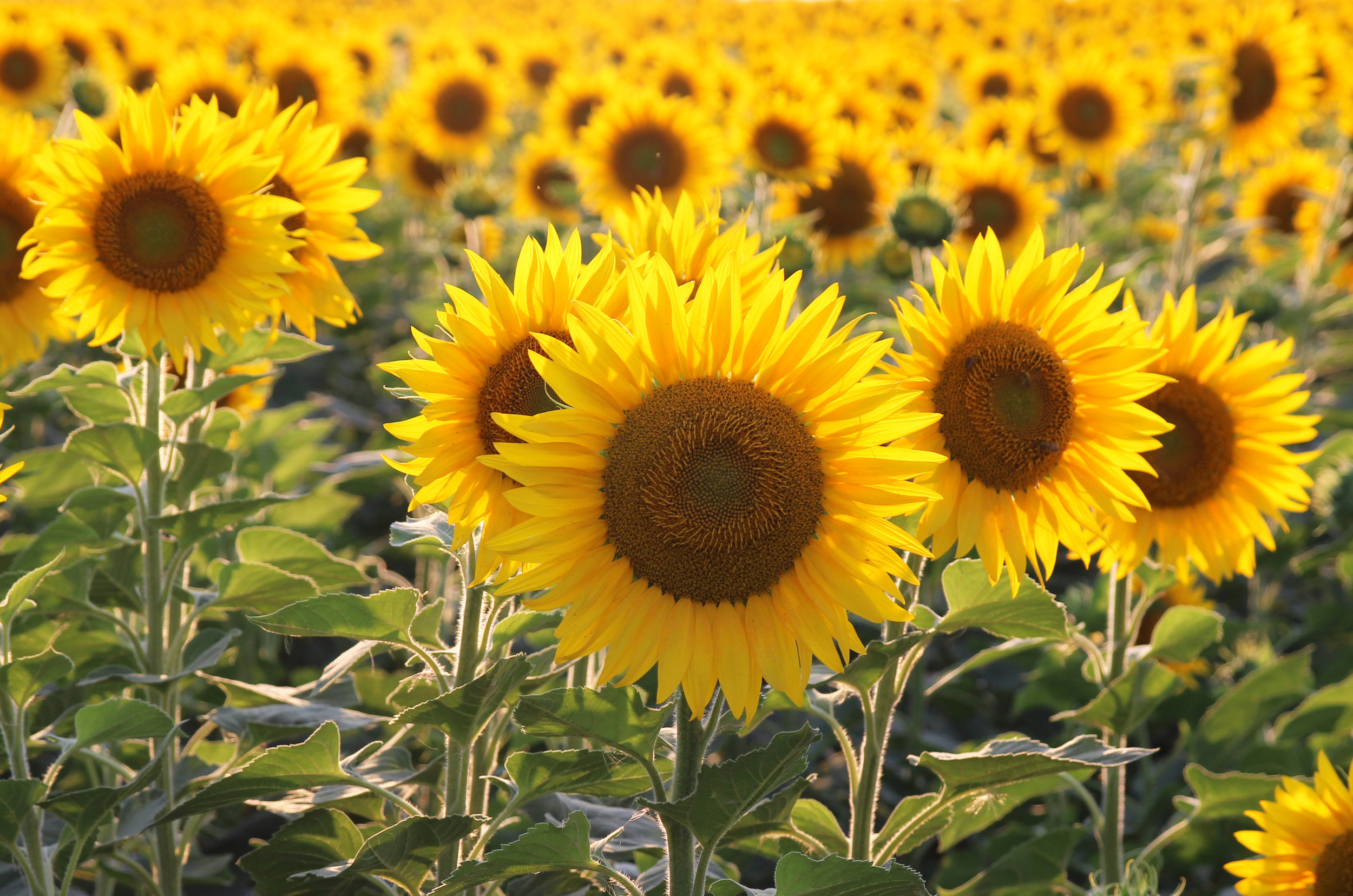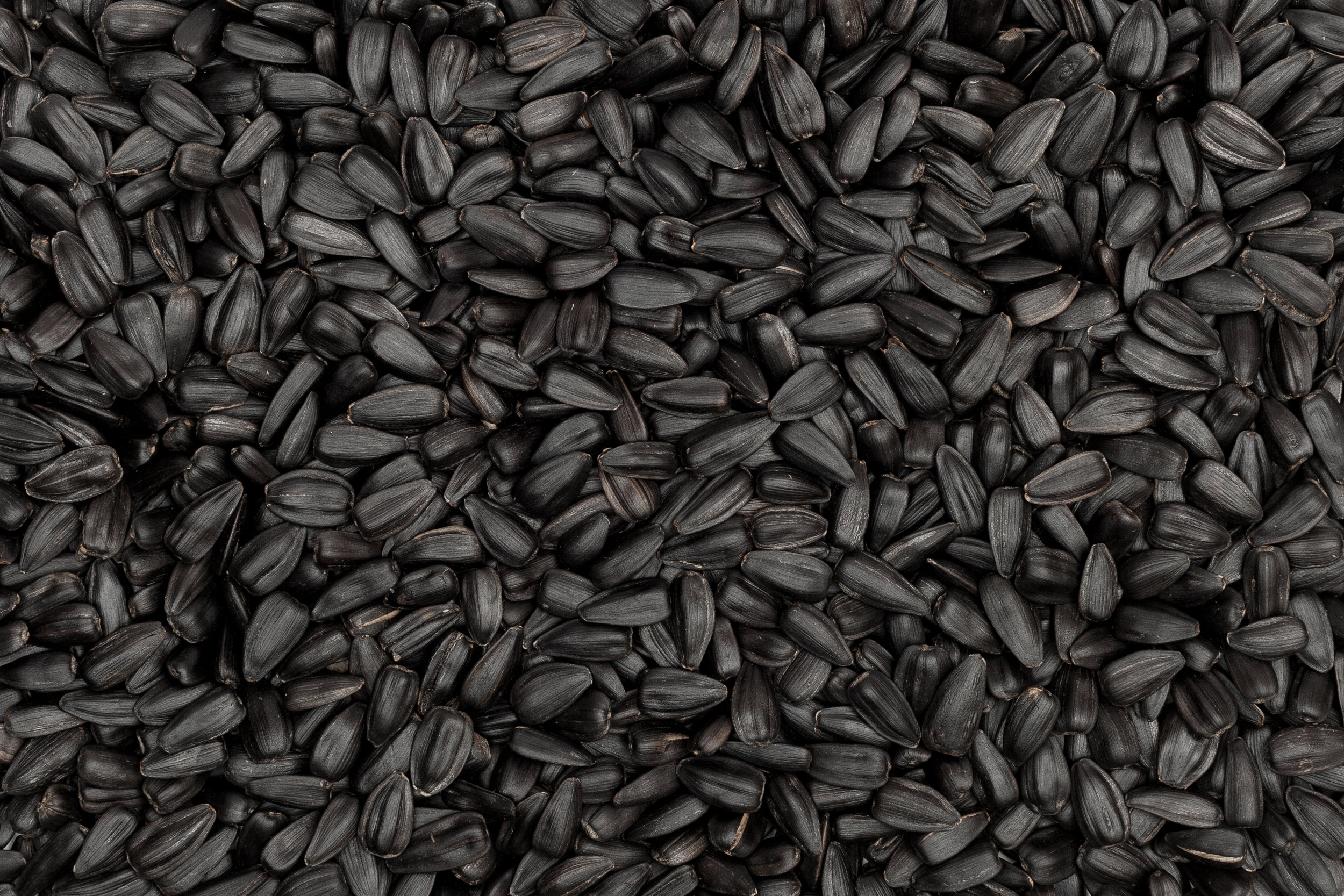Helianthus annuus (Common sunflower)
Warm season, annual broadleaf plant with an extensive and deep root system. Adapted to well-drained, sandy to clayey soils. Establishes and matures quickly, forming a dense canopy and suppressing weeds. Developed from the naturally occurring native type for commercial seed and oil production. Now gaining popularity in double crop systems, as a green manure and as forage or silage. Attracts birds, butterflies, bees and other beneficial insects. Use thin shelled black oil varieties for bird habitat. Varieties listed below.
DISTRIBUTION / ADAPTATION
INFORMATION & ATTRIBUTES
Family: Asteraceae
Duration: Annual
Growth Habit: Forb/herb
Native Status:
Growth Form:
Mature Height: 36in. - 120in.
Bloom Color: yellow
Bloom Period:
Annual Precipitation: in.
Drought Tolerance:
Shade Tolerance:
Elevation:
Fire Resistance:
Fire Tolerance:
Nitrogen fixation:
SOIL ADAPTATION
Coarse Texture:
Medium Texture:
Fine Texture:
Salinity Tolerance:
CaCO3 Tolerance:
pH Range:
SEEDING NOTES
Seeds per Pound:
Seeding Rate: PLS lbs/acre
Season:
Days to Germination:
VARIETIES
Peredovik - Black oilseed variety intended for wildlife food and cover. The high oil content of the seeds provides excellent mineral and caloric nutrition for doves, quail, pheasant, turkeys, ducks, song birds and various migratory birds. The thin shells are easy for small birds to crack and open. Before maturity, young plants are highly preferred deer feed as well. Plants mature at up to six feet tall in 80-100 days. Mature plants that are left to stand through winter months, provide thermal cover for wildlife. Also use in cover crop mixes to attract honey bees and native pollinators.




